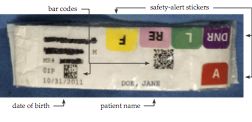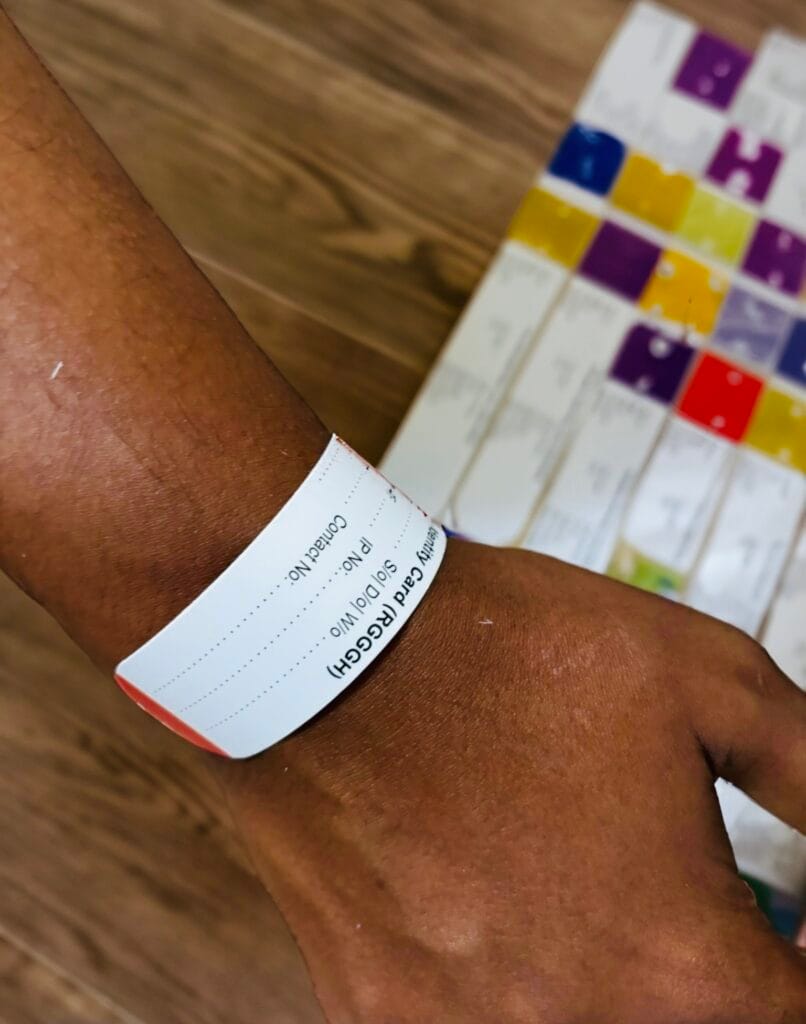How Patient Identification Band Minimizes Threats in Patient Treatment and Care
How Patient Identification Band Minimizes Threats in Patient Treatment and Care
Blog Article
Person Recognition Bands: A Key Tool for Improved Medical Accuracy
Individual identification bands stand for an essential element in the quest of clinical accuracy and person security within healthcare settings. The true level of their effect on patient end results and overall health care quality warrants better assessment.

Value of Person Recognition
Person recognition is an important element of health care that makes sure the security and accuracy of medical therapy. Appropriate identification protocols are necessary to prevent clinical mistakes, which can cause negative client outcomes, including wrong medication administration, misdiagnosis, or inappropriate therapy plans. The importance of accurate person recognition can not be overstated, as it functions as the structure for efficient interaction amongst health care carriers.
In atmospheres where multiple people are obtaining treatment simultaneously, the threat of identity complication boosts. Carrying out durable recognition systems assists mitigate these risks and improves person safety. Patient Identification Band. Exact recognition contributes to the stability of clinical records, guaranteeing that individual histories, allergies, and previous therapies are properly connected to the right person.
Furthermore, conformity with regulatory criteria and certification demands often mandates rigid person identification methods, cultivating a culture of responsibility and top quality treatment. Eventually, the relevance of patient recognition goes beyond plain administrative jobs; it is a basic aspect of delivering high-grade medical care that prioritizes patient security and enhances professional end results. Buying efficient recognition techniques is not simply useful-- it's important in today's facility medical care landscape.
Kinds Of Patient Identification Bands
In healthcare settings, various kinds of client identification bands are utilized to ensure exact identification and enhance safety. These bands function as a crucial tool in preventing medical errors connected to person misidentification.
One of the most usual type is the conventional wristband, normally made from resilient plastic and printed with the patient's name, day of birth, and a special identification number. These wristbands are typically color-coded to convey specific details, such as allergies or various other clinical conditions.
Another type is the barcode wristband, which includes a scannable barcode linked to the client's digital wellness document. This innovation permits efficient information retrieval and verification throughout medicine administration and various other scientific processes.
Furthermore, RFID (Superhigh Frequency Identification) bands are coming to be progressively popular. These bands can connect wirelessly with hospital systems, allowing for real-time monitoring and identification of individuals, thus simplifying process and boosting client security.

Benefits for Doctor
Utilizing person recognition bands supplies considerable benefits for doctor, enhancing both functional effectiveness and client safety. These bands function as an essential device in simplifying individual administration processes (Patient Identification Band). By guaranteeing precise identification, doctor can reduce the risk of management errors, such as mislabeling examples or misdirecting therapies, which can lead to expensive delays and complications
In addition, individual identification bands promote seamless interaction amongst the healthcare group. With readily obtainable and standard patient details, companies can make enlightened choices quickly, boosting general workflow. This performance is especially crucial in high-pressure environments such as emergency situation departments, where time-sensitive interventions are critical.
The application of recognition bands likewise sustains compliance with regulative criteria and best methods, therefore lessening the threat of legal consequences originating from identification errors. The use of these bands improves information accuracy in electronic health and wellness documents, leading to far better care sychronisation and connection.
Effect On Patient Safety
Precise individual identification is a keystone of medical care safety, substantially lowering the chance of mistakes that can endanger person health. Making use of patient identification bands is important in ensuring that each individual gets the right treatment, medicines, try these out and procedures. These bands function as a trusted recommendation point for healthcare specialists, decreasing the threat of misidentification, which can lead to significant effects such as wrong medicine management or medical errors.
The implementation of standardized person recognition bands adds to a culture of safety within medical care setups. By supplying clear, quickly readable information, these bands help to reinforce the relevance of validating individual identity at every phase of treatment. Additionally, they assist in communication among employee, making sure that everybody associated with a patient's treatment recognizes their details requirements and requirements.
Furthermore, using patient recognition bands can improve the accuracy of digital wellness documents, even more decreasing the potential for errors - Patient Identification Band. By prioritizing individual safety with reliable identification techniques, doctor can foster depend on and self-confidence amongst clients, ultimately bring about much better professional outcomes and enhanced individual fulfillment. The impact of proper individual recognition can not be overstated; it is an essential component of premium medical care delivery
Best Practices for Application
Effective execution of person identification bands is critical for boosting patient safety and reducing errors in health care setups. To accomplish this, medical care companies must embrace a number of finest methods. Initially, personnel training is necessary; all staff member need to recognize the relevance of exact individual recognition and the procedures for band application. Regular training sessions and correspondence course can make sure continuous compliance.
2nd, the layout of the recognition bands should focus on exposure and resilience. Bands must be very easy to check out, contain crucial individual information, and stand up to everyday wear. Utilizing color-coding can better enhance fast identification.


Third, integrating electronic wellness documents (EHR) with identification band systems can simplify process. Automated notifies for disparities in client identification can protect against prospective errors prior to they happen.
Lastly, performing regular audits and responses sessions will help recognize locations for improvement. Involving team in these discussions fosters a society of safety and responsibility.
Final Thought
In conclusion, client identification bands play a critical function in enhancing medical accuracy and making sure person safety within healthcare systems. Adopting finest techniques for implementation pop over to this web-site fosters a culture of safety, ultimately leading to boosted person results and better trust fund in medical care solutions.
Client recognition bands stand for a vital element in the pursuit of medical accuracy and client security within medical care environments.Utilizing patient recognition go to website bands supplies substantial benefits for health care providers, enhancing both operational performance and person safety and security. By focusing on client safety through effective recognition techniques, health care companies can promote trust and self-confidence amongst patients, eventually leading to much better scientific results and enhanced patient complete satisfaction.Effective execution of client identification bands is crucial for enhancing individual safety and minimizing mistakes in healthcare setups.In conclusion, patient recognition bands play a vital function in boosting medical precision and making sure client safety and security within health care systems.
Report this page